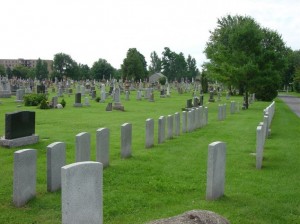The outdated, obsolete Fairey Battles, totally unsuitable for training and dangerous as well, continued to cause serious problems. As well, the spring thaw brought more problems to an already overstretched training facility. Both the field at Sandhurst and the runways at Gananoque were unserviceable due to the quantity of water, and would remain so throughout the month of April. In the midst of this, forty-nine more pupils arrived on the 3rd for training with Course 15, and seven ratings and two R.A.F. airmen, who had been quarantined at Halifax, arrived to commence training with Course No. 12. The scheduled date of commencement for Course No. 15 was detained for three weeks due to the continuing problems with Fairey Battles.
“Considerable difficulty is being experienced operating Battle aircraft on runways at night. The brake system appears to be totally inadequate and both instructors and pupils are having considerable trouble in keeping on the 100′ runways, which are definitely too narrow for the training of pupils on this type of aircraft. The trouble experienced with Battle aircraft is in direct contrast with the trouble-free first-term Harvard aircraft.” (April 3 diary entry.)
The Commanding Officer did not take well to the suggestion made by R.C.A.F. Group Captain Mackworth when he visited the airdrome that the station’s commitments should be reduced. Since this was the only school in Canada training naval pilots, it wasn’t possible to reduce training. There were only two Service Flying Training Schools engaged in training Fleet Air Arm pupils, the C/O said, and the other one, No. 1 S.F.T.S., R.A.F. Netheravon in Wiltshire, was also well behind schedule due to weather and interference by enemy action.
The following is the story of a horrific scene that underscores the opinion that the Fairey Battles were “a death trap.” You will discover that it was an appropriate term for the one which killed LAC J. M. Reardon, a young 20-year-old pupil from Lancashire. The instructor was from Galway, Ireland, and had arrived with the Fourth Echelon on January 25, 1941 and survived the crash.
FAULTY FLAME TRAPS CAUSE FATALITY
LAC J. M. Reardon killed April 13, 1941
On the evening of April 13, 1941, three local women had the horror of witnessing a tragic mishap in the air as they stood in a farm home near Collins Bay. A Fairey Battle aircraft flown by LAC John Murray Reardon, age 18, of Southport, Lancashire, caught fire in the air and crashed into a tree a mile north of the airport. The pupil was killed and his instructor, F/L J. A. Tinne of Galway, Ireland, injured. With parts of the cockpit in flames, the pilots tried to return to the base. While still a mile away, the aircraft struck a large elm tree and burst into flames. LAC Reardon was thrown from the plane when it hit the tree.
Mrs. Sidney Reid saw the accident from her bedroom window. With her were her daughter, Nettie, and a friend, Mrs. S. Dumphrey of Kingston. They had heard the motor of the airplane backfiring, and she described the horrific sight to a Kingston Whig Reporter:
“We could hear the motor backfiring. It circled over Collins Bay and I thought it was going to hit the house. I could see what looked like a ball of flames in the cockpit and it moved and I said, ‘That’s a man!’ We started to shout, ‘Get there, boys! Get there, boys.’ The plane started to drop and then it hit the tree and just seemed to burst into a sheet of flames. As it hit the tree I could see the ball of flames in the cockpit bounce out onto the ground.”
Mr. Reid and their 20-year-old son, Clarence, hurriedly dressed and drove their car as close as they could to the crash scene. They found one flyer dead on the ground with his flying suit and parachute on fire; the other flyer was walking around holding his head. An ambulance from the station was driven over almost inaccessible country to within a short distance of the plane and the 28-year-old instructor was then rushed to hospital. When they removed the pupil’s remains, the outline of his body had been burned into the ground.
L.A.C. Reardon was the son of Mrs. A. F. Reardon and stepson of Geoffrey L. Wright of Southport, Lancashire. He was buried with full military honours at St. Mary’s Cemetery, Kingston.

LAC Reardon and LAC Harry Bridge are the only airmen buried in St. Mary’s Cemetery.
Next Chapter: 8. First F.A.A. Pilots Receive Wings In Canada